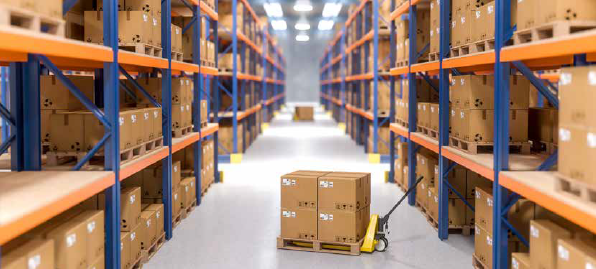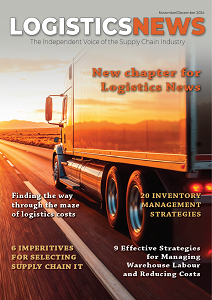I have personally seen these tips make a big positive impact in the past. You might think they are common practice, but, surprisingly, many are not in place in some operations. Even if these examples do not directly apply to you, I hope they will give you some ideas on where to start looking for and making improvements.
Start each shift with a team talk/roll call
A physical meeting at the start of each shift is the critical foundation to building a culture of order and structure. Even though this is standard practice in most warehouses, sometimes it isn’t in place and the effects can be seen.
I suspect this was common practice decades ago, but since most companies have biometric systems, they rely on these to manage time and attendance. Often employees clock in on time, only to spend time getting ready for work and only actually commence productive work 15 to 45 minutes after they’ve clocked in. Make sure the meeting starts exactly on time every day.
Proactively manage break times
One area where most (even well-run) operations lose critical productivity is before and after break times. A 15-minute tea break commonly results in a 30- to 40-minute loss of productivity. Employees go to break too early and are not immediately back at their workstations when the break time is over. Those minutes for each person add up to huge productivity loss.
Supervisors must manage this proactively by being present at the right locations to monitor employees’ movement. Employees should work productively until the break time and return to work and resume production as soon as the break is over.
Make sure employees have the right tools
Even if you have excellent processes and technology, if your employees do not have the right practical tools to do the work efficiently, you will get a poor output.
Tools like Stanley knives, tape guns and gloves for packing employees who work with boxes are critical. Without them, employees are left to improvise and the results are poor quality and low productivity.
Talk to your people to find out what they need to make their work faster, better and safer. Another great way to identify the shortfalls is to spend time doing the functions yourself, like picking, receiving or packing. You will gain valuable insight and also new respect from your team.
Ensure material handling equipment (MHE) is in good working condition
If your MHE is not in good working condition, it is not only unsafe but will cause reduced output. Don’t delay any repair or maintenance work on machines as this will only create0 massive bills later on.
If not already in place, make sure that every machine operator fills in a checklist at the start of each shift. This list should be handed in to a central point where you can check for any issues with the machines.
Improve housekeeping
Housekeeping in the warehouse is one function that is always difficult to get right. Good, effective housekeeping programmes have huge benefits like improved safety, productivity improvements and reduced error rates.
Assign a specific person to be responsible per aisle or area to improve housekeeping. Divide the number of aisles by the number of employees and assign each section accordingly to a specific individual. Make clear signage boards for each aisle with the name of the responsible person. You can include a photo of the employee and a list of duties and standards that are expected.
By assigning individual ownership to each area, you will create a sense of accountability. Employees will start influencing each other positively to keep the aisles in good condition, otherwise they will have to correct it later on.
Look at your flow
Changing the major layout and design of a facility will be prohibitively expensive and normally not feasible. After the initial design is done, warehouse management is normally left to make do with what there is even though there might be some challenges.
But, often there are specific areas or items that you can rearrange or change, which does not need to cost much. Look at areas where people have to move up and down between tasks that do not add directly to stock flowing out. Examples of things to focus on are computer stations, printer locations, dustbins and consumables areas.
Improve communication and efficiency with two-way radios
If you do not have a two-way radio for every supervisor and manager, you should consider getting one immediately. Without radios, a simple message that could be delivered quickly can take a long time because individuals have to walk long distances and spend time finding people.
Apart from the day-to-day benefits, radios can also play a huge role during emergencies.
Stagger shifts per activity area to reduce dead time and avoid overtime
A common problem I have often seen is that a warehouse has one starting time for all employees, even across different functions. While this makes managing time and attendance easier, it does create various other problems, especially dead time and then overtime.
Let’s look at a real-world example that I came across: All the employees’ standard hours were 7am to 5pm. The outbound packing team had no productive work to do for the first hour or so until the pickers start dropping orders in the dispatch area. Then, later in the shift, the packing team couldn’t complete the work on time and there was one hour of overtime on average each day. The simple change of letting the packers start at 8am to 6pm eliminated the dead time and overtime completely.
Implement a rewards and recognition programme
Sadly, it is common for the warehousing industry to be quick and efficient to punish poor performance with disciplinary action, but it is not so good at rewarding or recognising good performance. The positive effects of an official reward and recognition programme are immense. If used correctly, it will improve the quality of work, productivity, staff morale, build a positive performance culture, reduce absenteeism and more.
First decide what categories to reward (productivity, least number of errors, MHE operator, etc.), then announce it to the team and follow through each month with a small ceremony.
Improve the environment to improve the quality of work
I have seen operations that are fraught with low quality output, high error rates and low staff morale. Our instincts, as warehouse managers, are to constantly focus on the employees and punish any mistakes harshly.
On closer inspection, I often find that the environment, and not the employees, is the problem. Employees wear old and damaged uniforms, or none at all. PPE, such as reflector vests and safety shoes, is worn out and damaged. If you go to the employee's change room, it is a horrible mess and a poorly maintained area. Workstations are equally chaotic, dysfunctional and neglected.
If you truly want to change the quality output of your operation and reduce the error rate, you will need to change the environment. You cannot expect employees to perform high quality work and be proud of their output if the environment they are asked to operate in is exactly the opposite.
Finally, each warehouse is unique and faces specific challenges. Take some time to look for these types of small yet practical improvements that you can make. Focus on the basic fundamentals of structure, order and discipline. Don’t underestimate the impact and positive effects a small change can make. And a series of small improvements can add up to make a massive difference.

.jpg)


